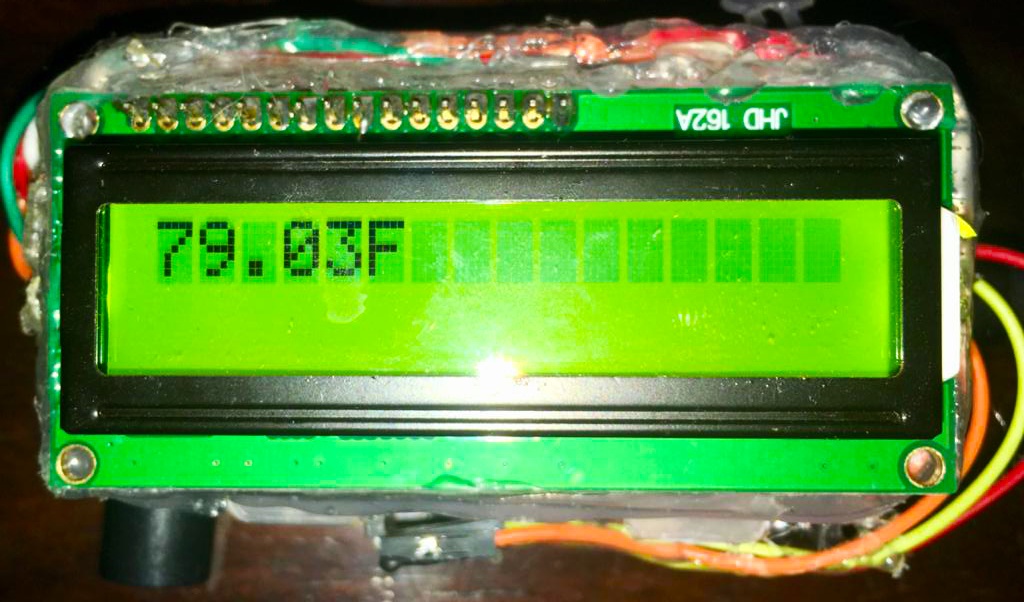COVID-19 Open-Source Innovation: Contactless Infrared Thermometer
The COVID-19 Detect and Protect Challenge is crowdsourcing open-source hardware innovations to tackle the disease. Every one of the 300+ innovations submitted is made freely available, with all instructions needed for others to build them. Here, we talk to Weekly Impact Winner Abhijit Mukherjee behind the Contactless Infrared Thermometer.
Tell us about your solution. How does it address a specific need around COVID-19 response/recovery?
My solution is an enhanced version of infrared temperature detection technology. It is a completely autonomous device that is capable of capturing a target objects' temperature within close proximity, and transmitting this data over the internet to a dedicated application (mobile app, website, chat groups, etc.) without the need for anyone to facilitate the temperature taking, minimising their risk of exposure.
This device will be especially useful in high-risk zones like hospitals, airports, and stores or offices to track, monitor, update, and report high fever cases to the intended authority, autonomously.
What was the inspiration behind the project?
I’ve always believed that necessity is the mother of invention. My motivation behind this invention was simply to protect my family from this deadly virus, which was especially worrying with an infant son at home. Though we did our utmost best to maintain self-hygiene inside the home, I was still highly concerned about my son’s exposure to any kind of contamination brought in by outsiders like the help, cooks, and other essential service providers entering the house. Thus came the idea behind this device, to sense the body temperature of people before they step into the house and alert me if there is a fever detected.
Why do you think open-source is so important in responding to COVID-19?
This is a very important question for me. Since not everyone can afford the time, resources, and support to build such devices on their own, shopping from available commercial options becomes the easiest solution. However, herein lies the biggest challenge, as the market is already facing a huge supply shortage and other geographical challenges which are raising the costs of these products higher every day.
The open-source concept of knowledge, tools, or software can empower everyone to build such devices themselves and solve their own problems without depending on others. I follow the belief that knowledge is the key to every success, and it has to be free.
What is the impact you hope to achieve with this solution?
I believe that the impact is huge and that the device will be essential equipment even after the pandemic. Below are details of some high-level impacts:
- Hospitals/clinics – Outpatients’ fevers can be monitored and treated remotely.
- Airports/railways/any public transport – Passengers with the symptoms of high fever can be monitored and tracked remotely with checkpoints at entry and exit.
- Retail shops/supermarkets – Customers' health can be tracked remotely to ensure that they do not enter with high fevers.
- Housing societies/apartments – The temperatures of both residents and incoming and outgoing staff, essential service providers, visitors, delivery persons can be tracked remotely.
- Homes – The device can be mounted by the door to check everyone’s temperatures before they enter the house.
- Offices – Daily health monitoring of employees as they enter and exit the office.
What is one solution in the #COVID19DetectProtect challenge that you wish you'd built?
I wish I can build robot arms, beds, and appliances that are operated remotely to treat COVID-19 patients in the isolation unit, to avoid compromising the health and safety of doctors, nurses, and other hospital staff.
About Abhijit Mukherjee: I have been working as a software engineer for the last 15 years and I am passionate about building smart devices. My interests started during my schooling years and kept growing every day, leading me to this point. I also have a keen interest in AI and I wish to build more of such devices to improve our day-to-day living.

 Locations
Locations